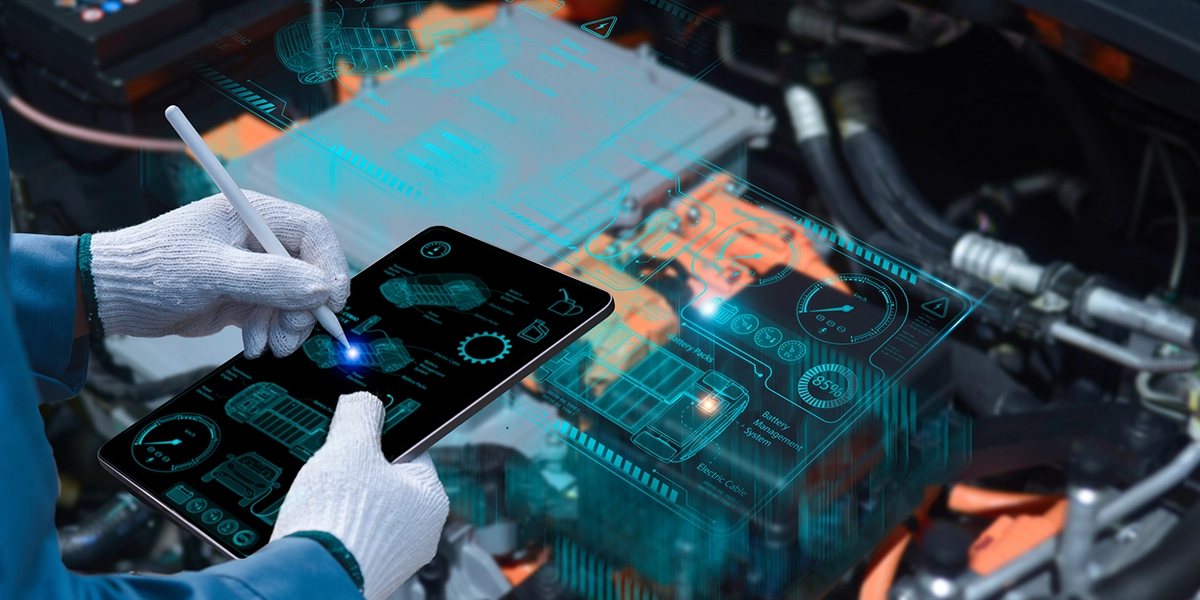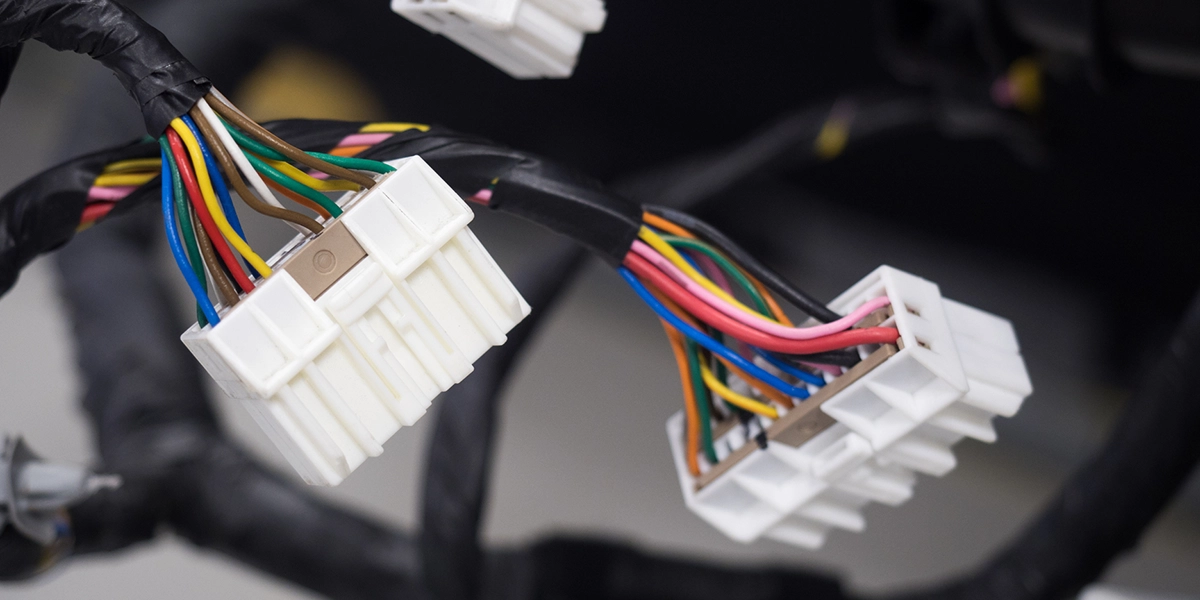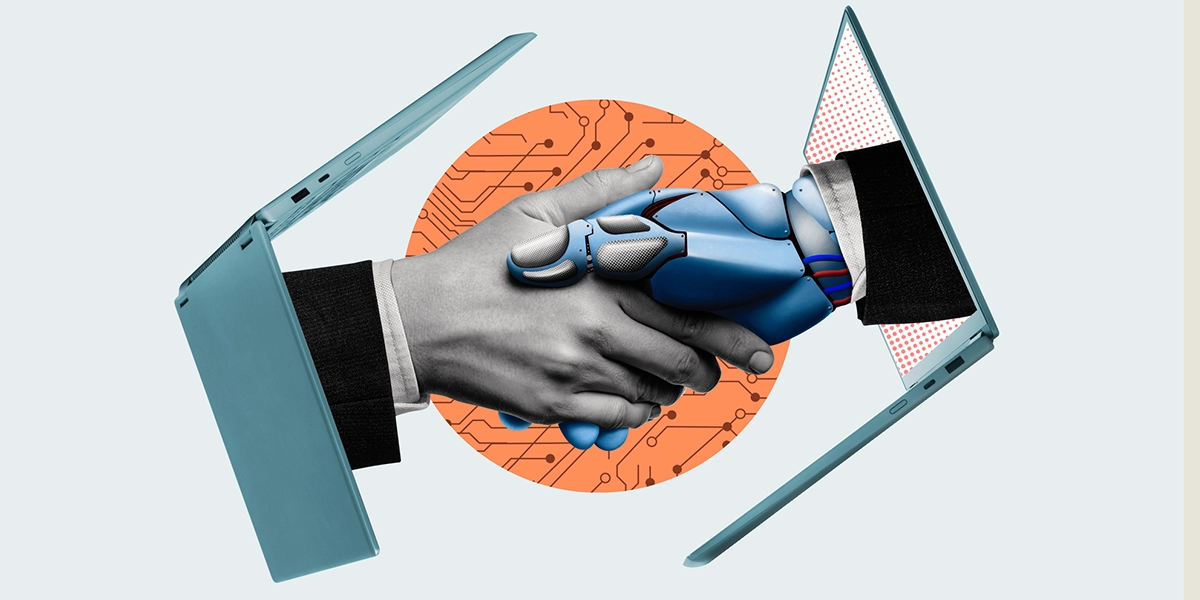Multimedia AI, proactive push notifications, conversational access to product information: In-vehicle assistance has evolved a bit since Tweddle Group launched its IVH platform in 2016. And, just as they led the way in touchscreen information access, they’re now breaking new ground by integrating those components in AVA, also known as the Advanced Vehicle Assistant.
We sat down with Business Development Director Laura McGowan for her perspective on the platform. In Part One we reviewed the project’s origins. In Part Two, we examined AVA’s potential impact on driver safety and its value in acclimating drivers to ADAS, or Advanced Driver Assistance Systems.
To wrap things up, Laura discusses AVA’s multimedia AI capabilities, its opportunities for monetization, and the prospect of using AVA to connect drivers to a wider OEM product service and support community.
Onboarding, On-Demand
So, AVA generates long-term revenue by strengthening brand loyalty through improved customer satisfaction.
That’s right. You’re driving repeat business by ensuring excellent ownership experience.
And that’s important, right? Because, as you were saying earlier, for some OEMs—not all of them, but some—the customer’s ownership enjoyment might not be a sufficient motivator. So, we try to help them look at the financial upside of creating happy customers.
But once you’re talking about bottom line benefit, you get to the feature subscription model. That’s one of the most exciting aspects of AVA. We’re already seeing OEMs move into subscription-based feature options, where for a fee you can activate vehicle features or turn them off, but AVA’s really tailor made for that model.
How so?
Let’s say a customer asks AVA about Adaptive Cruise Control.
AVA will explain the feature, but thanks to the system’s VIN-specificity it knows enough to say, “Oh, unfortunately, this feature isn’t equipped on this vehicle.”
And if the interaction ends there, that’s a bummer for the owner/driver. It’s far better if you’re working from the subscription-based model, because then the conversation continues, and the system could offer Adaptive Cruise control as a subscription-based upgrade.
“Your car doesn’t currently have this feature, but we offer an OTA (over-the-air) upgrade for X amount of dollars. Would you like to start a free trial?”
And every study on earth shows people are more apt to use, keep and appreciate a feature they acquire in this way, at the point and time of need, especially if it’s preceded by a free trial period.
Once the driver realizes they have this option, it encourages more discovery about the vehicle’s feature set, which could lead to more trials and subscriptions.
You can offer straight-up purchase of these features. If the driver wants, they can permanently install the feature for a higher price, which is something some OEMs are already doing.
So, you’re allowing the driver to customize their vehicle feature set, they’re discovering feature options based on interest or need via the system and you’re creating a new revenue stream.
And it’s interesting, because it’s all emerging from these ideas of customer satisfaction and continuous, at-your-own-pace onboarding and multimedia AI.
Which, from a consumer standpoint, is way better than your typical at-the-dealership onboarding, right?
"The system can say, 'Hey, you’re due for an oil change. Would you like me to schedule an appointment? By the way, here’s a coupon for your visit.'"
I mean, admittedly, I am not every driver. But in my case, most of the on-site dealership onboarding will go in one ear and out the other. I retain very little of that because, in that moment, all I want to do is leave the dealership.
I want to know how the vehicle works, for sure. But the need for understanding is situational. It comes from wanting to accomplish this thing or wanting to understand that thing in the moment.
I think that’s common. I don’t spend any time whatsoever at the dealership when I get a new lease. I arrange everything ahead of time. I literally grab the keys and go.
“How do I start the car? How do I pair my phone? Where’s the cup holder?”
Right. (Laughs) Based on every conversation I’ve had, that’s what the average owner wants answered prior to driving off the lot. That’s ownership, Day Zero.
But there are many days of ownership after that. Your relationship with the vehicle doesn’t stop there, obviously.
Connecting Drivers to the OEM Product Service and Support Community
Based on your research how does the ownership lifecycle evolve, in terms of the driver’s relationship to understanding the product? Or does it evolve? Is there any pattern to that interaction?
From what we’ve seen, there absolutely is.
What we’ve seen is first step, immediate ownership. This is where the traditional onboarding phase takes place, where you give the driver whatever they need to drive off the lot.
You don’t want to burden them with the whole owner manual at this point. What’s the phrase? You don’t want to boil the ocean in this first phase. And, like you said, a lot of folks aren’t going to remember any of it anyway.
The next stage would be the period when you’re getting slightly familiar with the vehicle. Maybe you’re identifying buttons, maybe you’re not sure what they are or what they do.
This is the phase where you’re researching the vehicle. If you have an in-vehicle assistant, this phase would be prime time for you to reach out and ask those questions.
Several months down the road, you’ve got a handle on basic operation but here come your maintenance intervals. You need an oil change. Your tires need to be rotated.
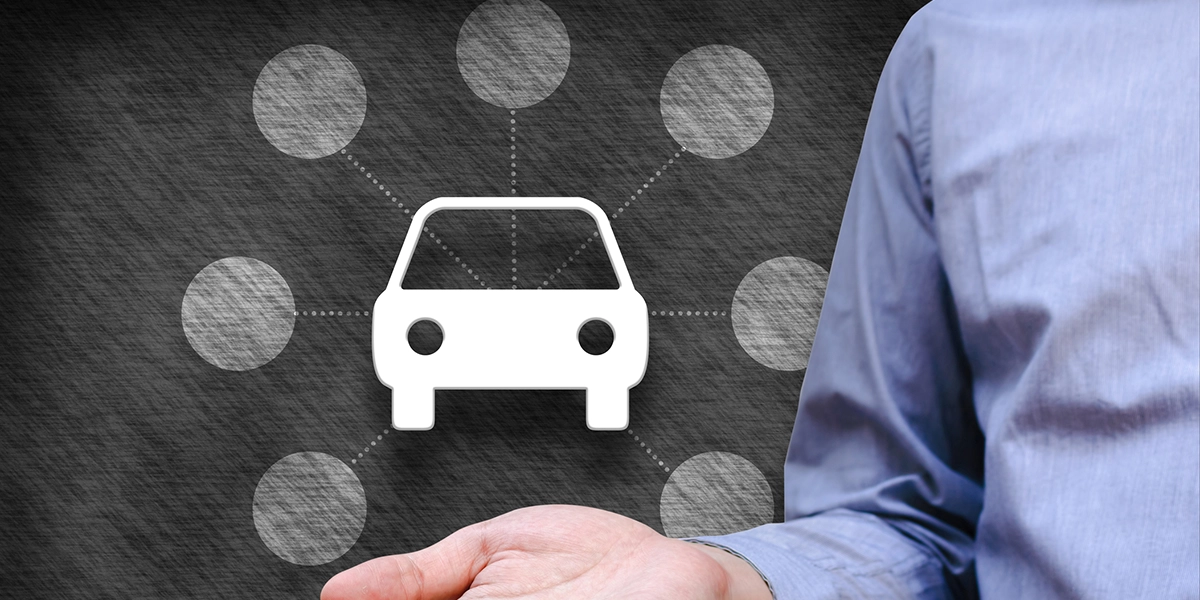
This is a perfect opportunity for the OEM to re-engage with the customer, both to make the driver’s life easier and to drive traffic to the authorized retailer.
And if AVA is right there, AVA can facilitate that.
The system can deliver OEM push notifications to say, “Hey, you’re at 12,000 miles. You’re due for an oil change. Would you like me to schedule an appointment for you right now? Oh, and, by the way, here’s a coupon for a certain percentage off your visit.”
You’re offering huge convenience, you’re simplifying product maintenance, you’re driving business to the authorized retailer. You’re doing all of this automatically and, again, everybody wins.
And I think that’s key to the future of the AVA system, these opportunities to return your investment through monetization.
We haven’t even addressed the question of advertising space, or promotional space, within the system. Huge opportunities to work out deals for preferred vendor for placement within the system. There are so many ways an OEM could spin that and make it work.
I’m picturing something like [mobile GPS application] Waze. When I use Waze, if I want to find a gas station, or a coffee shop, or whatever, the first four or five options are ‘Sponsored’ slots. They’ll appear higher than the other options, which are all based on simple proximity.
Right. Very common now. You put that in the vehicle cockpit and make it voice activated and you’ve just created a big potential revenue generator. And what you’re doing, in that, is connecting the driver to a whole product service and support community.
With one system, you’ve made it easier for the driver to understand their product. You’ve installed a powerful safety feature enhancement. And you’ve helped ensure customer loyalty and repeat business by improving the customer experience.
So, just to bring it all full circle, it may be easy to dismiss “customer satisfaction” as a fluff term, but there’s a significant real dollar value there, in all these different ways.
Ask Me Anything: the Arbitration Engine
We’ve talked about AVA’s ability to converse and to provide natural language responses, and how that enhances its interaction with the driver.
What can you tell me about how that works? What sorts of questions will the system respond to in a meaningful way?
That’s a good question. In the experiments I’ve seen, you truly are able to ask it anything. It answers questions about the vehicle, but it also answers just about any other question you might have. It’s not psychic (laughs), but it will answer any general, reasonable question you might think of.
And how does that work?
A key part of the platform is its arbitration engine. That’s really what sets it apart from the other AI assistants that are out there.
If you ask AVA about the vehicle itself, the model you’re driving, it will draw on OEM-sanctioned product information to create this whole multimedia AI interaction.
And the information is simply embedded in the system, so it doesn’t have to look outside for that.

Those responses, of course, will be highly accurate and VIN-specific, because the source of knowledge will be actual product information.
So, that information is drawn from one specific bucket, which is the authored product information.
If you ask it a general question, the arbitration engine knows, and it says, “Okay, we need to draw our answer from the broader internet.” The system parses a much wider pool of information to provide the best possible answer. “How do I make an espresso?”
The arbitration engine knows it has your owner information over here, and then the full Internet out outside, right? Your standard ChatGPT universe over there.
And this arbitration engine makes the call as to which ‘bucket’ it’s going to draw from?
That’s exactly right.
If you ask, ‘How do I turn on my heated seats?’, it’s looking exclusively at the owner information. It’s not going to scrub the Internet. And it’s going to be far less apt to ‘hallucinate’.
And if you ask it what’s showing at the nearest movie theater tonight…
The arbitration engine will say to itself, ‘This is not a vehicle related question and I’m going to go out and now search on the Internet and I’m going to find that for you.’
And the cool thing is, this arbitration layer could manage things like reserving parking, for example.
“Hey, I’m going downtown. I need to reserve parking. How do I reserve parking?”
The system could feasibly accommodate another bucket tied in with the city parking in that region, and it could arrange a reserved spot for you with any parking company that might be tied in with it.
That’s future state, but it’s easy to see how the system’s fundamental structure is expandable and could address a whole range of driving-related concerns.
The arbitration layer creates a host of opportunities to identify different types of questioning. It doesn’t need to just be automotive here, and the Internet there.
It can be automotive and parking. It can be automotive and scheduling. It could be automotive and Fandango, right? Get your movie tickets. It could really be any API we decide to incorporate.

I believe the university study [AVA partners] iNAGO was involved with found it 20% more accurate than GPT-based solutions.
That’s correct, 20% more accurate, and that’s because when you ask a question about the vehicle the arbitration engine recognizes it and restricts its source of knowledge to content developed for that specific vehicle.
If you ask a general question the system will allow itself to draw on information from the wider ‘net and, of course, the answer will be as good as the source material.
But those arbitration restrictions provide highly accurate vehicle information.
Multimedia AI
The sky’s the limit.
It really is.
In-Vehicle Help, or IVH, really brought the touchscreen vehicle assistant to the market back in 2016. That’s evolved into AVA, which is this completely different beast, thanks to the conversational AI component.
But it’s not the only AI vehicle assistant on the market. How does it distinguish itself from some of the other options?
I mean, the quality and accuracy of the AI is huge, the CAN bus integration is a big thing, the proactive notifications are really significant, and it draws these different facets together in a very elegant way.
But for me, as a prospective user, I think the most obvious differentiator is the multimedia AI capability.
None of the other assistants I’ve seen present content in quite the same way, where the system offers conversational summaries of your VIN-specific product information, and also presents the associated information content on the screen while giving you the option to watch very brief, very relevant video content once the vehicle is no longer in motion.
"When was the last time people were excited to drive?"
What sets AVA apart is that it allows the customer to connect with their vehicle in a way that’s never happened before and isn’t happening with any other system.
To me, that’s a big deal. That’s the kind of information experience I’d want.
If I was shopping for a vehicle, and one of my options had this system, it would skyrocket to the top of my list. And, having spoken to everyday consumers on the street, it doesn’t sound like I’m alone in that.
Really, it could bring the fun back into driving, in my opinion.
It’s the 1950s all over again. The 1970s.
Right? Yes. Exactly. When was the last time people were excited to drive?
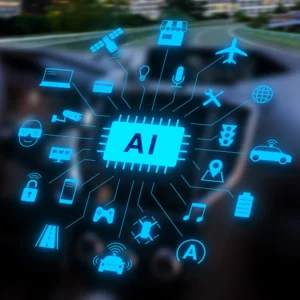
You think of all the frustrations that could be resolved. Think of all of the additional safety you could provide. All these new opportunities for ease behind the wheel of the vehicle and the potential to build a seamless connection to maintenance, to service and support.
All of those frustrations are now gone and you’re at one with your vehicle and want to drive it again because you’re not worried about all this other stuff.
That would be a big deal for the driver. That’s the vehicle meeting you where you are and caring about what I care about.
Right. The vehicle is meeting me where I am and where I need it to be.
Special thanks to the Cranbrook Institute of Science and The Office coffee shop for hosting our photoshoot & interview.
Laura McGowan photos by Matt Wong.
To learn more about AVA visit: info.tweddle.com/en-us/ava

